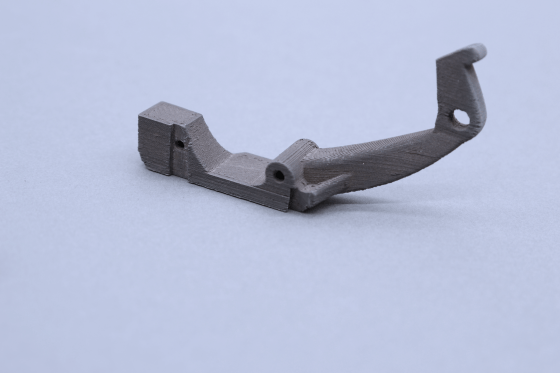The Royal Dutch Navy relies on new technologies including Zetamix 3d printing to revolutionize its production process. Indeed, with the need for spare parts for each mission, being able to produce these parts on the spot instead of ordering and managing stock would be a significant improvement.

Choosing the 316L filament
To meet this goal, The Royal Dutch Navy has been testing the feasibility of using 3D printing for a while now and is no stranger to the process. So when the Royal Air Force needed a reliable helmet bracket for F16 fighter jet water landing training program, the Navy jumped at the opportunity to test the new 316L Zetamix filament and print the part in-house.
This particular bracket plays a vital role in attaching electronic equipment, including visors and heads-up displays, which is essential for training soldiers in realistic combat scenarios. However, the existing plastic bracket has a short lifespan and is prone to damage when it falls into the water. Therefore, the use of Zetamix stainless steel filaments would provide the ideal solution, as it is resistant to shocks, water, corrosion, and dust, making it durable.
The results
With the help of this innovative 3D printing material, the Royal Dutch Air Force would be able to produce a reliable and robust helmet bracket capable of withstanding even the most challenging training scenarios. While the bracket is currently in the initial testing phase, Zetamix’s involvement is paving the way for a new era of precision manufacturing that will enable the Royal Dutch Navy and Air Force to meet their needs more effectively.